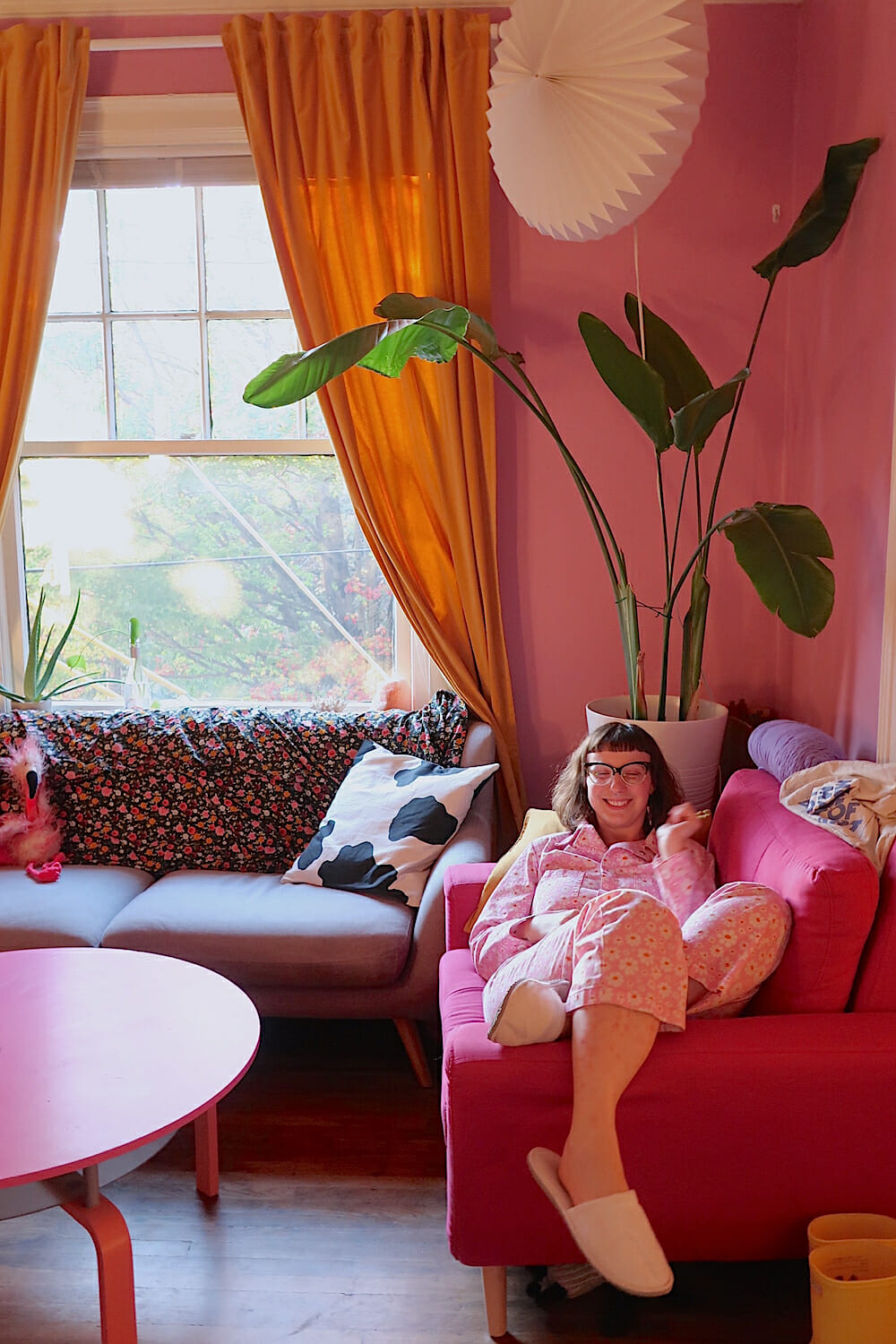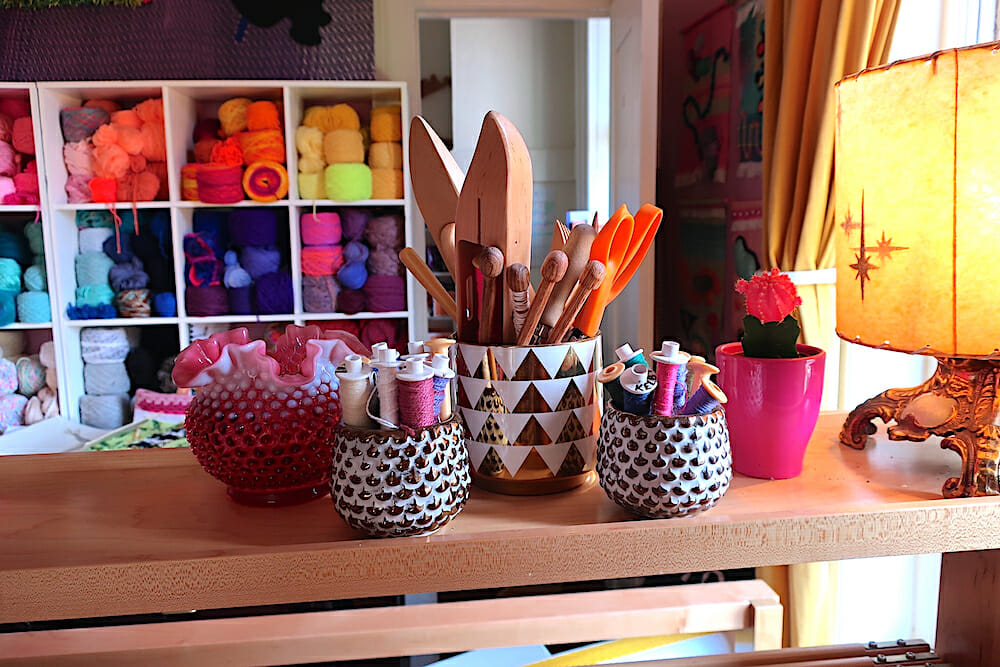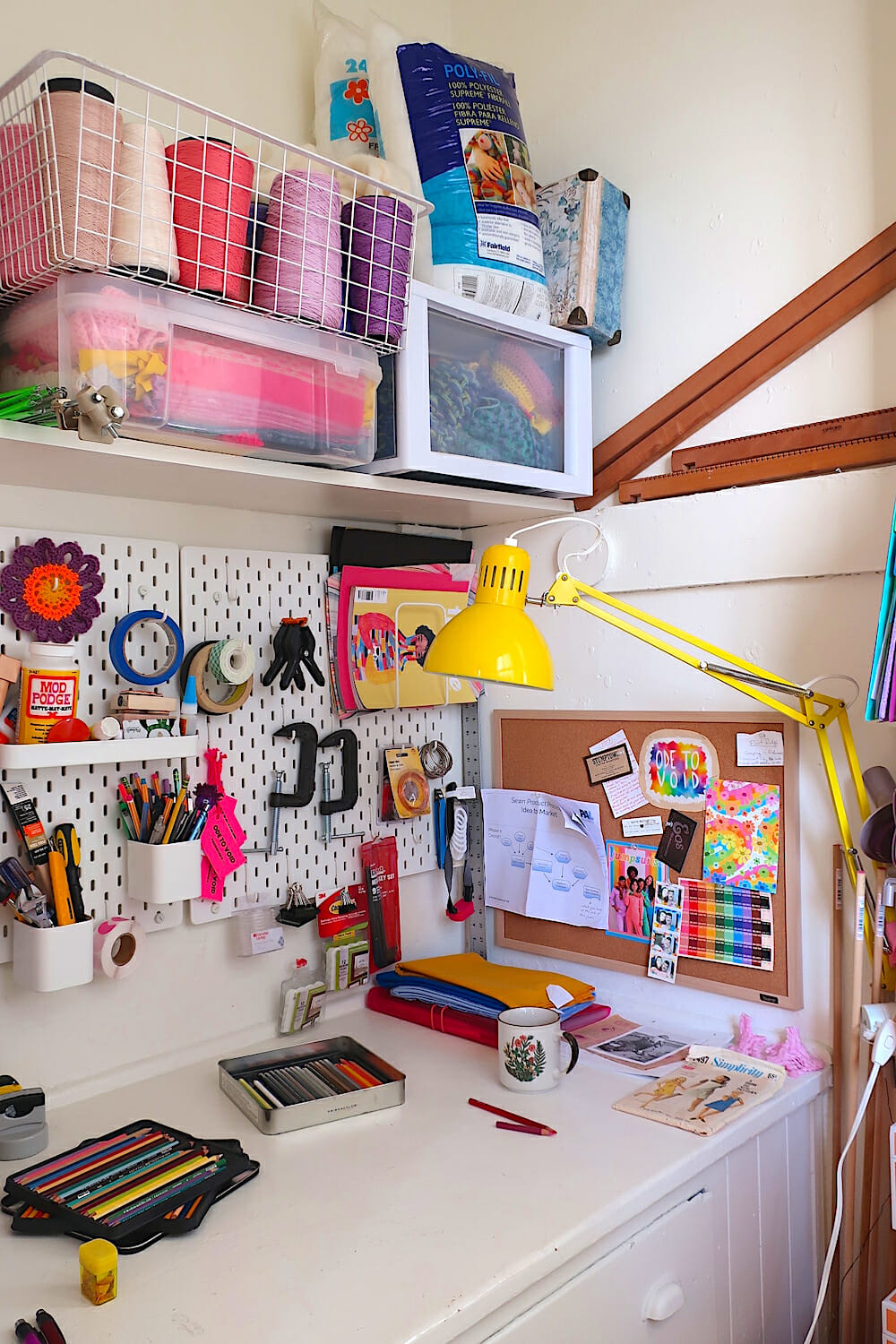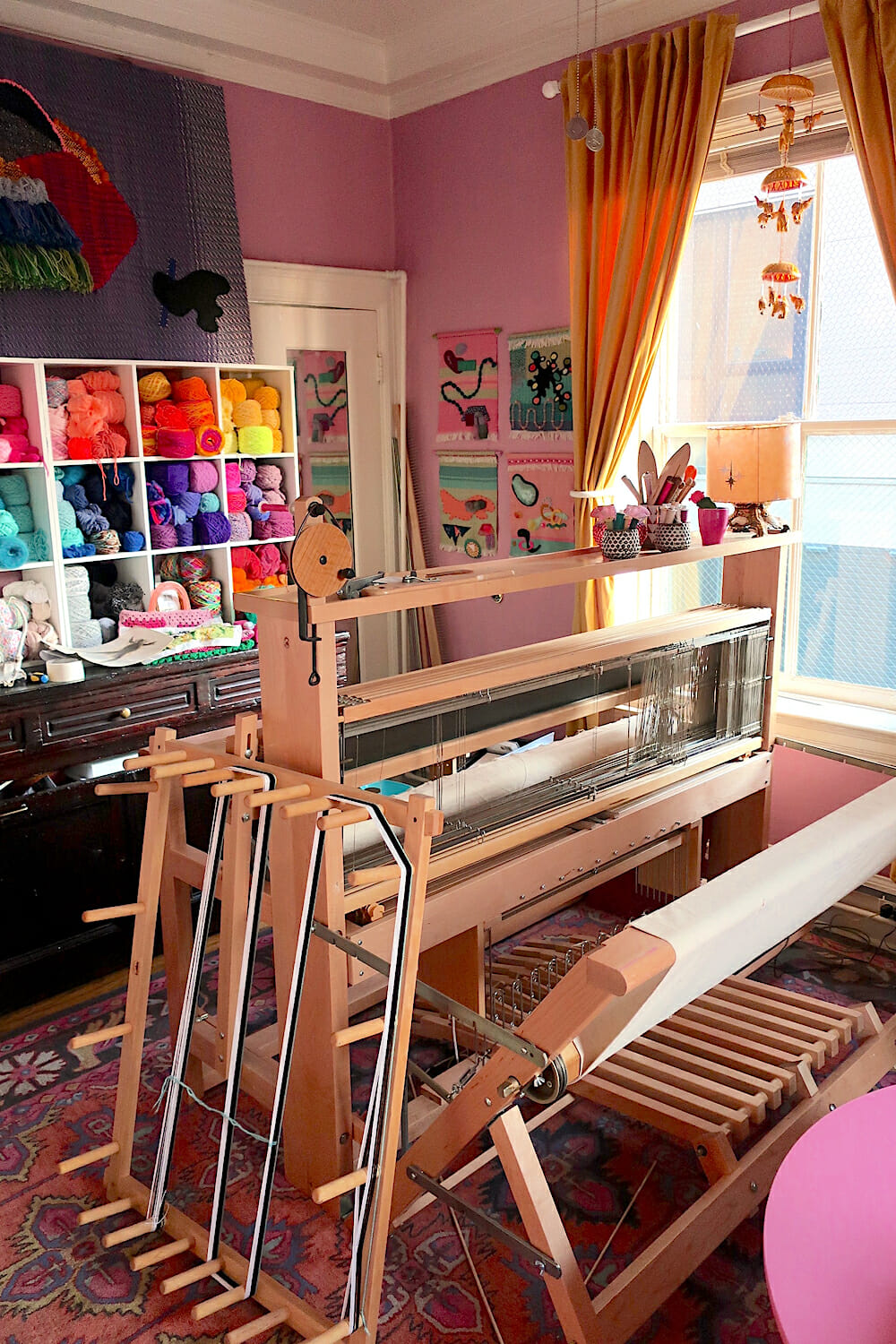The act of making, not the abstract messaging of the final product, is what drives me and brings me the most joy.
Kelsey Peterson’s work is defined by bright colors, bold patterns, and unconventional materials, all of which she utilizes to bring excitement, optimism, and joy to the viewer. Having built up her artistic practice independently, Kelsey’s visions remain bold and unlimited. Through the use of wool and cotton yarns, acrylic felt, raw merino wool, cut up clothing, and other miscellaneous materials, her intricate creations weave colorfully curious tales that introduce brightness and joy into any room.
Growing up in a small town in Geneva, New York, Kelsey was always a “crafty” kid, teaching herself how to hand sew by the age of four. Amid dreaming up a bustling lifestyle as a stylist in NYC, Kelsey switched gears when visiting schools in Boston and falling in love with the Massachusetts College of Art & Design. There, she developed a passion for creating in 3D, exploring ceramics, glass, jewelry, and fibers. She graduated with a BFA in sculpture & art history in 2015. While developing her skills in metal work, blacksmithing, and iron casting, Kelsey began feeling limited by traditional sculptural materials. She was able to begin pushing more boundaries—especially with color—when she started taking more fibers elective courses. This shift helped Kelsey develop her bright and bold, and as she describes, “even bordering on garish,” aesthetic seen in her art today. Set up in her own home studio with her beloved loom, “Anni,” Kelsey and her creative endeavors do not stop with fiber. Her online Etsy shop, Ode to Void Fiberworks, also carries her original jewelry, accessories, and graphic prints, all aiming to spread the same positive and joyful sentiments felt in any piece she creates.

Kelsey ensures that joy and positivity is present in her work and in her studio space.
Photo by Tyler London Mays
PErsonal History

Kelsey’s weaving tools in her studio.
Photo courtesy of Kelsey Peterson
Why Wait for Someone Else
“My mom taught me the basics of embroidery, sewing, cross stitch, knitting, and crocheting, all of which she learned from her mom. I grew up around women who are creators and makers, though I’m sure they would downplay such a title. I still wear some of the dresses my mom made when she was in college. There’s an underlying attitude of, ‘Why wait for someone to do something that I could do myself?’ with these practices, and that’s the attitude the women in my family embody in all facets of life. I love them so much for that.”
What Drives Me
“I started taking more fibers electives my junior year of college, and that’s when things started to click. The most validated work within the sculpture department tended to be abstract, high-concept, and minimalist (historically: white and male), whereas the ‘crafty’ nature of fibers was part of its inherent value. I realized that I am a maker, not necessarily a conceptual artist. The act of making, not the abstract messaging of the final product, is what drives me and brings me the most joy.”
Endless Possibilities
“The moment I realized MassArt had a weaving class, I was so excited to take it. This was before I was even a student; I had only seen the room full of looms on my campus tour. Turns out a lot of people felt similarly, as I wasn’t able to get into the class until first semester senior year. I immediately knew it was for me. It made sense, and I was good at it. It combined the object creation of sculpture, the slow and meditative nature of most fiber techniques, and the endless possibilities of color I had only previously associated with painting.”
Creating Space for Success
“I started working in food service when I was 14 years old. I also have a full-time desk job at Planned Parenthood, and it makes such an enormous difference to work for an organization you feel passionately about. Chances are, you’re a multi-faceted person with interests and drive outside of making art. Think about what those are, and how they may direct you toward something fulfilling that can also provide a reliable income. It’s certainly not to say you should give up on your creative pursuits, quite the opposite. The truth is you simply won’t be able to maintain a meaningful, fulfilling artistic practice if you, the artist, are not cared for.”

A I’m so glad I got into those weaving classes my senior year of college, because I honestly don’t know what my current artistic practice would look like had I not.” – Kelsey Peterson
Photo courtesy of Kelsey Peterson

Kelsey’s loom, which she calls Anni.
Photo courtesy of Kelsey Peterson
I was always incredibly drawn to the rich history weaving possesses in every culture across the globe. Clothing is a human necessity, and therefore fabric with which to make it is as well. Every culture has its own patterns and color combinations, many of which are considered sacred. It is, of course, traditionally ‘woman’s work,’ which only deepens my love for it. Strangely, ‘woman’s work’ is typically used as a disparaging term, despite it being almost synonymous with ‘work that is necessary for the continuation of the human species.’ Within the art world too, fiber-based crafts are regularly deemed less-than, despite their abundance of beauty, intricacy, historical reference, and skill. It’s almost as though women and our contributions have been detrimentally undervalued across time and place for the entirety of human history. Weird.


